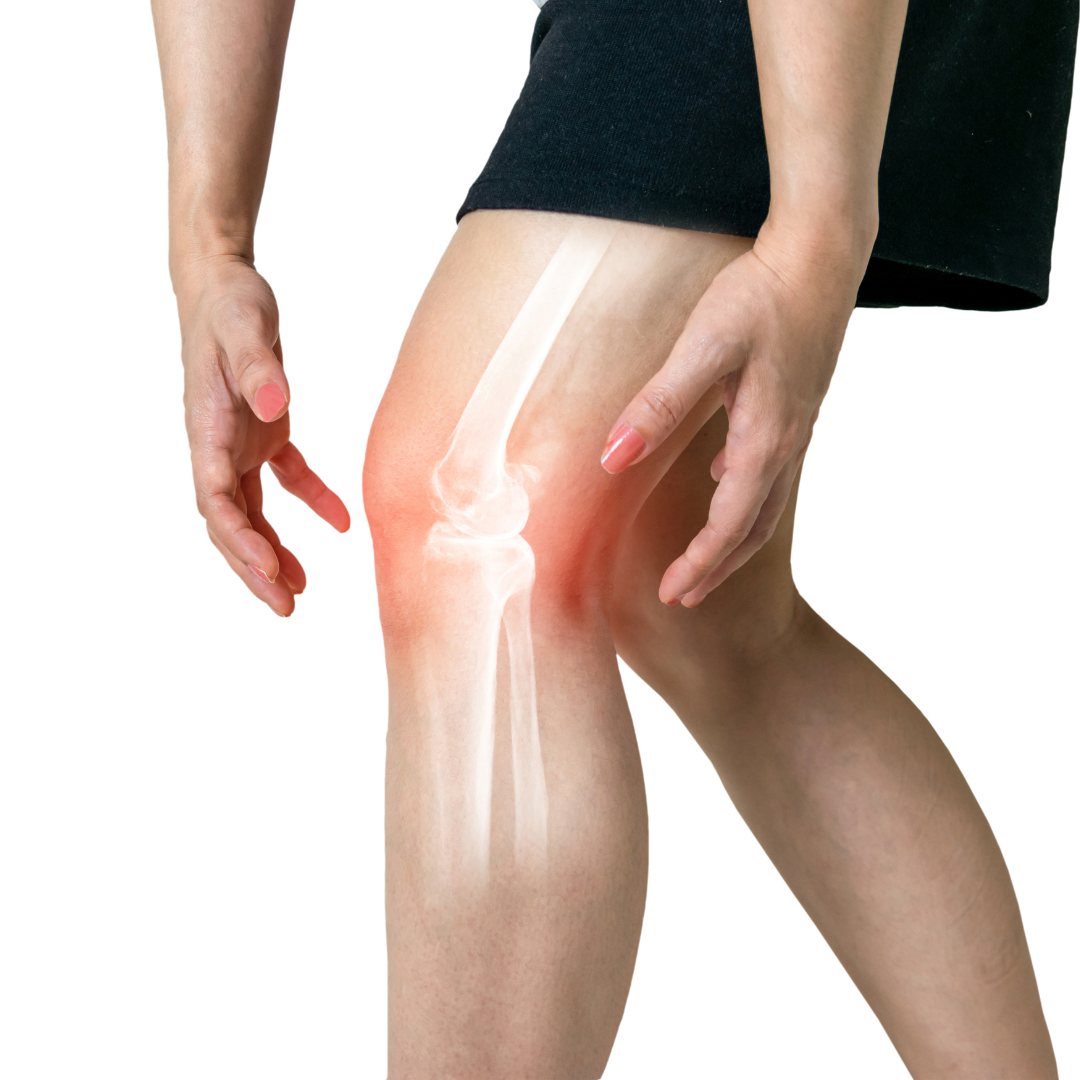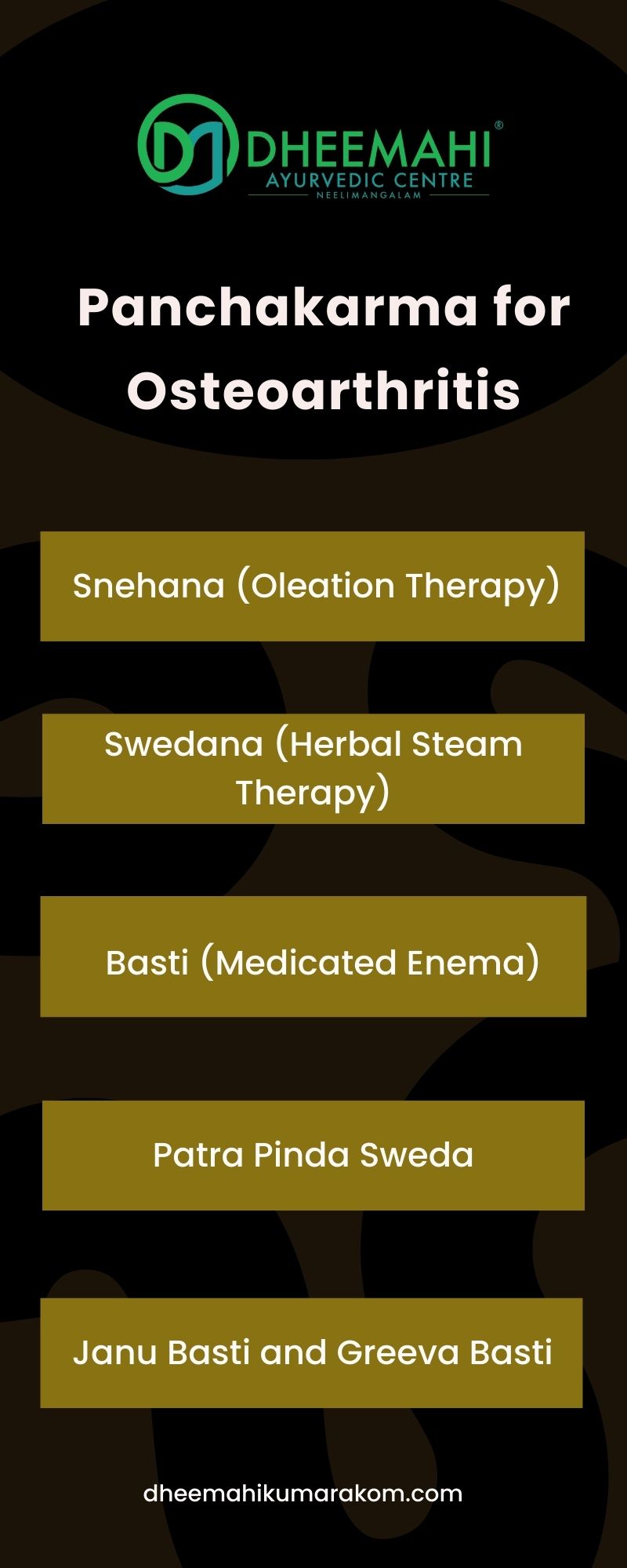Ayurvedic Treatment for Osteoarthritis Joint Pain in Kumarakom
Osteoarthritis is one of the most common forms of arthritis, characterized by the gradual degeneration of joint cartilage and underlying bone. While this condition is generally associated with aging, lifestyle habits and poor nutrition also contribute significantly to early onset and chronic symptoms. If you’re experiencing persistent stiffness, pain, and reduced joint mobility, Ayurveda provides a gentle yet effective approach to long-term healing and joint preservation.
In Kumarakom, the serene backwaters of Kerala not only offer a peaceful retreat but also serve as the nurturing environment for deep healing through classical Ayurvedic care. This article explores the unique benefits of Osteoarthritis Ayurvedic Treatment in Kumarakom, combining ancient wisdom with modern comfort to deliver sustainable relief from joint pain.
What Is Osteoarthritis? A Brief Overview
Osteoarthritis is a degenerative joint condition where the protective cartilage that cushions the ends of bones wears down over time. This wear and tear can affect any joint, but it most commonly impacts the knees, hips, hands, and spine. Symptoms include:
- Persistent joint pain
- Morning stiffness
- Swelling in the joints
- Cracking or grinding sensations
- Decreased flexibility
Unlike rheumatoid arthritis, which is autoimmune in nature, osteoarthritis is largely mechanical and degenerative. Yet, from an Ayurvedic standpoint, the root cause is still traced to imbalances in the doshas-especially Vata
Understanding Osteoarthritis in Ayurveda
According to Ayurveda, joint pain and degeneration are linked to the aggravation of Vata dosha, particularly in the asthi dhatu (bone tissue). Vata governs all movement in the body, including circulation, nerve impulses, and joint function. When Vata becomes imbalanced due to factors such as aging, cold weather, stress, and improper diet, it begins to dry out and weaken the lubricating synovial fluid in the joints.
This leads to:
- Dryness in the joints (Sandhishosha)
- Cracking sounds (Sandhigata Vata)
- Limited mobility and severe joint pain
Osteoarthritis is typically classified under Sandhigata Vata in Ayurvedic texts. Effective Osteoarthritis Ayurvedic Treatment in Kumarakom revolves around correcting Vata imbalance, nourishing the joints, removing accumulated toxins (ama), and restoring proper circulation and mobility.
Causes and Aggravating Factors of Osteoarthritis from an Ayurvedic Perspective
Ayurveda emphasizes a root-cause approach to any disease. Some of the causes of osteoarthritis include:
- Vata-aggravating diet: Excess consumption of dry, cold, raw, and processed foods
- Sedentary lifestyle or overexertion
- Exposure to cold and wind
- Mental stress and anxiety
- Digestive disorders that lead to toxin accumulation
- Inadequate nutrition leading to dhatu (tissue) depletion
Panchakarma for Osteoarthritis
Panchakarma is one of the most effective tools Ayurveda offers to cleanse the body, reduce systemic inflammation, and rebuild tissue strength. In the case of osteoarthritis, Panchakarma therapies are customized based on the individual’s constitution (Prakriti), the severity of symptoms, and the level of doshic imbalance.
Key Panchakarma therapies used in Osteoarthritis Ayurvedic Treatment in Kumarakom include:
Snehana (Oleation Therapy)
This involves internal and external application of medicated oils to lubricate joints, loosen toxins, and prepare the body for deeper detox. Therapies like Abhyanga (full-body massage) with warm oils help pacify aggravated Vata.
Swedana (Herbal Steam Therapy)
After oil application, Swedana is performed to open the channels, soften stiff tissues, and facilitate toxin removal through sweat.
Basti (Medicated Enema)
One of the most effective treatments for Vata disorders, Basti introduces herbal oils or decoctions into the colon to balance Vata, nourish joints, and improve digestion and elimination.
Patra Pinda Sweda (Leaf Poultice Massage)
This therapy uses warm herbal poultices containing anti-inflammatory herbs to relieve joint stiffness and swelling.
Janu Basti and Greeva Basti
Localized oil pooling over the knees or spine helps in deep nourishment of cartilage and underlying bones, relieving chronic joint pain and supporting mobility.
Diet and Lifestyle for Osteoarthritis Relief
Ayurveda teaches that food is medicine. A diet that balances Vata and strengthens digestion (Agni) is crucial for managing osteoarthritis. Here are some guidelines:
Ideal Foods:
- Warm, freshly cooked meals
- Ghee, sesame oil, and other healthy fats
- Cooked vegetables like carrots, pumpkin, spinach
- Moong dal, rice, and soft grains
- Herbal teas with ginger, turmeric, and ashwagandha
Foods to Avoid:
- Cold and frozen foods
- Raw salads and uncooked sprouts
- Carbonated beverages
- Caffeine and alcohol
- Deep-fried, processed, or stale food
Lifestyle Recommendations:
- Avoid overexertion and heavy lifting
- Stay warm, especially during colder months
- Practice regular oil massage (Abhyanga)
- Maintain gentle daily movement like yoga or walking
- Prioritize rest and avoid late nights
Yoga and Joint-Friendly Movement
Movement is medicine when done correctly. A customized yoga regimen can support joint flexibility, reduce stiffness, and enhance circulation. Beneficial postures include:
- Tadasana (Mountain Pose) – improves posture and balance
- Trikonasana (Triangle Pose) – opens the hips and knees
- Bhujangasana (Cobra Pose) – strengthens the spine
- Vrikshasana (Tree Pose) – builds stability in lower limbs
Breathing exercises (Pranayama) such as Anulom Vilom and Bhramari are also recommended to calm Vata and reduce inflammation.
Herbal Support for Osteoarthritis Management
Ayurveda uses a number of herbs known for their anti-inflammatory, lubricating, and tissue-repairing properties. While formulations are always personalized, some commonly used herbs include:
- Shallaki (Boswellia serrata) – Reduces joint inflammation and pain
- Guggulu – Promotes detox and supports cartilage regeneration
- Ashwagandha – Rejuvenates joints and reduces Vata
- Rasna – Eases muscle stiffness and spasms
- Nirgundi – Analgesic and anti-inflammatory
All herbal support should be guided by an Ayurvedic physician, especially for long-term use.
Why Kumarakom Is Ideal for Osteoarthritis Ayurvedic Treatment
Kumarakom, with its peaceful backwaters, tropical climate, and natural richness, provides the ideal backdrop for Ayurvedic healing. The region’s serene environment aids mental relaxation, which is a crucial part of balancing Vata and relieving joint pain.
Moreover, the access to authentic herbs, experienced Ayurvedic physicians, and traditional practices ensures that you receive classical care aligned with nature and time-tested wisdom.
What to Expect from an Ayurvedic Treatment Program
A typical Osteoarthritis Ayurvedic Treatment in Kumarakom includes:
- Detailed Ayurvedic consultation and assessment
- Panchakarma therapies tailored to your condition
- Nutritional guidance and meal planning
- Personalized herbal support
- Daily yoga and meditation sessions
- Follow-up care and home routines for post-treatment
By focusing on the root causes rather than suppressing symptoms, Ayurveda helps you regain joint flexibility, reduce pain, and prevent further degeneration.
Patient Experiences and Results
Many individuals who come to Kerala for Ayurvedic treatment report significant improvement in mobility, pain reduction, and overall quality of life. Long-term benefits include:
- Reduced dependence on painkillers
- Enhanced joint strength and flexibility
- Better sleep and digestion
- Improved mental clarity and reduced anxiety
- A renewed connection with body awareness
Ayurveda doesn’t promise overnight relief, but it does offer a sustainable path to healing and vitality.
Conclusion
Osteoarthritis doesn’t have to define your future. With the right support, lifestyle shifts, and personalized Ayurvedic care, joint pain can be significantly reduced and managed long-term. The gentle and time-tested methods of Ayurveda, especially when practiced in a healing environment like Dheemahi Ayurvedic Village Kumarakom, offer a way back to comfort, mobility, and joy.
If you’re looking for an authentic and effective Osteoarthritis Ayurvedic Treatment in Kumarakom, Dheemahi Ayurvedic Village provides a holistic approach that not only eases your symptoms but also nurtures your entire body, mind, and spirit for lasting wellness.
How Our Booking Process Works
The unique approach involves a series of discussion during your initial decision-making process to make sure that we will be able to match your expectations with our treatment.
Based on the discussions with you our team of expert doctors will design the best treatment package personalized for your needs.
01
Consultation Form
Fill out our consultation form, and let us know when will you be available for our doctor to talk to you
02
Discussion with Doctor
Discuss your health condition and expectations with our doctor.
03
Booking Confirmation
Confirm the booking by making a payment of 50% advance.
Consultation Form
Submit this form to initiate a booking with us
Have any queries? We will help you. Talk to us now
Say Goodbye to Health Woes & Hello to Healthy Living
Dheemahi Ayurvedic Pvt Ltd
12/386 Varaputhara Road
Kumarakom, Kerala, India
Pin 686563
Dheemahi Ayurvedic Centre, Near Neelimangalam Bridge, Kumaranaloor, Perumbaikad.P.O, Kottayam, Kerala, India, Pin 686016
Other Treatments
Karkidaka Chikilsa | Ayurvedic Treatment for Depression | How to Reduce Stress Naturally | Autoimmune Disorders | Mental Health Ayurvedic Treatment | Weight-Loss Treatment | Frozen Shoulder Ayurvedic Treatment | Diabetes Ayurvedic Treatment | PCOS Ayurvedic Treatment | Celiac Disease Treatment | ayurvedic treatment for skin diseases | nervous system ayurvedic treatment | Back Pain Ayurvedic Treatment | Cervical Spondylitis Ayurvedic Treatment | ayurvedic treatment for blood sugar | Fatty Liver Ayurvedic Treatment | Knee Pain Ayurvedic Treatment | Migraine Ayurvedic Treatment | Osteoarthritis Ayurvedic Treatment | Psoriasis Ayurvedic Treatment | Sinusitis Ayurvedic Treatment | Ayurvedic Detox Treatment | Migraine Ayurvedic Treatment | Ayurvedic Treatment for Rheumatoid Arthritis | Ayurvedic treatment for joint pain | Ayurvedic treatment for ulcerative colitis | Panchakarma Treatment |


